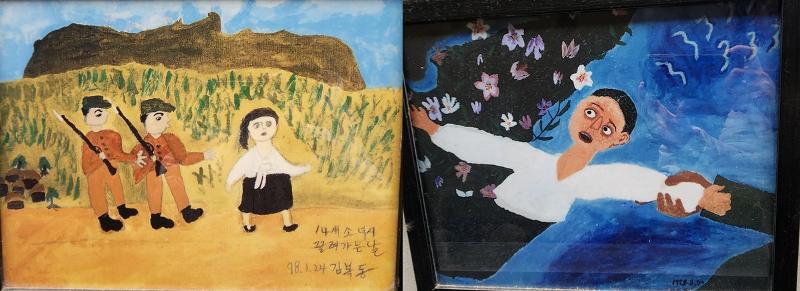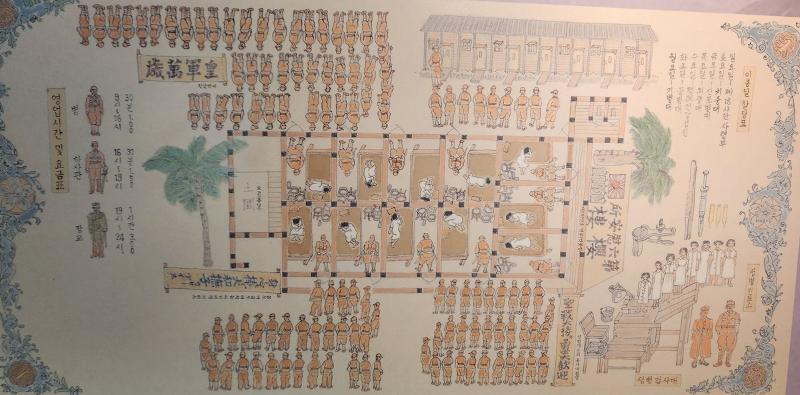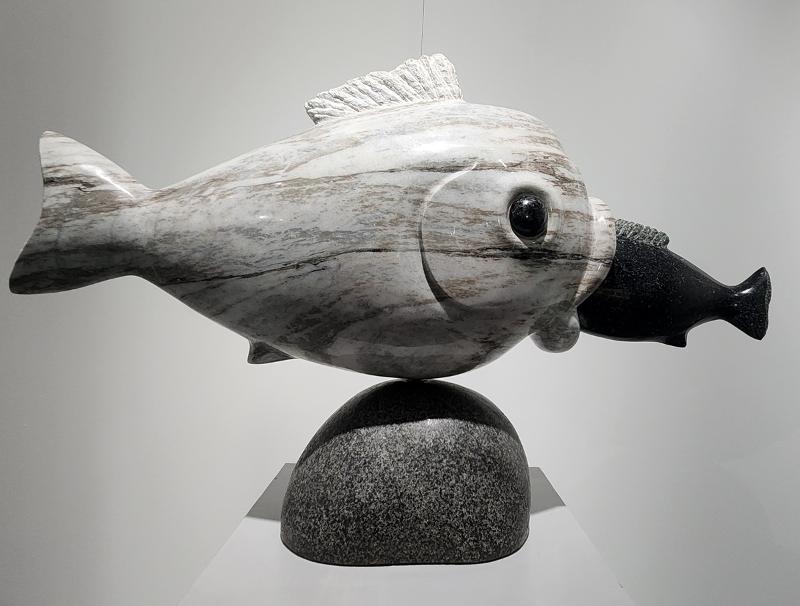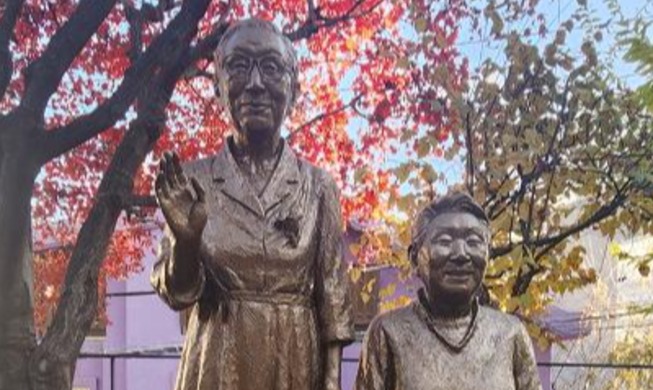
On the left is a plaster display at the War and Women's Human Rights Museum in Seoul's Mapo-gu District featuring the faces and hands of women forced into sexual slavery before and after World War II. On the right is the inside of the North Korean Human Rights Museum in the city's Jongno-gu District.
By Lee Jihae
Human Rights Day is observed on Dec. 10 every year since the United Nations General Assembly in 1950 designated the occasion. To mark the day this year, Korea.net recently visited the following two human rights museums in Seoul.
War and Women's Human Rights Museum
This museum honors Korean women and girls forced into sexual slavery by Japan before and during World War II, but also women around the world who suffered from sex crimes during wars. Run by the civic group Korean Council for Justice and Remembrance for the Issues of Military Sexual Slavery by Japan, the facility is about a 20-minute walk from Hongik University Station.
Launched in 2012 due to the victims' wish for future generations to remember such history, the museum was set up thanks to donations from many individuals and organizations. Japanese donors contributed KRW 500 million to 600 million.

These drawings by victims of sexual slavery based on memories of their capture by the imperial Japanese Army are displayed at the War and Women's Human Rights Museum in Seoul.
Displayed are drawings by victims of the moments they were captured by Japanese soldiers. The imperial Japanese army set up "comfort women centers" where such crimes were committed, and the military issued direct orders to gather women for the atrocities.
For this task, Japan's government agencies and its colonial governments in Taiwan and Korea cooperated in the process. The Japanese military also strictly monitored and regulated such venues run by private companies.
The U.N. Special Rapporteur on violence against women defined this practice as "military sexual slavery in wartime" and blasted the term "comfort women" as a Japanese government attempt to downplay and cover up the issue.
The displays include the history of the sex slaves, global efforts to make the Japanese government release an official apology and testimonies from victims. The museum also has stories of women in modern society suffering from sex crimes committed during wars.

A drawing at the War and Women's Human Rights Museum shows victims of sexual slavery at rooms in the center and Japanese soldiers standing in front of them to rape them. Other troops line up in front of the rooms waiting for their turns. On the lower right are women lined up to be tested for sexually transmitted diseases.
Lee Ji-young, a manager at the museum, said, "The museum just doesn't inform the public about what the victims endured from the Japanese military, but also displays the testimonies and stories of foreign victims. This follows our belief that wartime sex crimes against women going on worldwide must immediately be stopped."
She said Japanese visitors apologized for their country's past atrocities and pledged to spread to others in Japan what they learned at the museum.
Audio devices are available to visitors to hear commentary in Korean, Japanese and English.
North Korean Human Rights Museum

The sculpture "Killer" by Lee Woon-sik shows a white fish that symbolizes the North Korean government eating a black fish that represents the North's people.
The North Korean Human Rights Museum in Seoul's Jongno-gu District shows the North's oppressive political system and human rights violations. Opened in November last year, it contains testimonies from North Korean defectors compiled since 2003 by the civic organization Database Center for North Korean Human Rights (NKDB) to assess the human rights situation in the North.
On the left side of the entrance are short sentences on small pieces of paper representing phrases uttered by defectors that were slightly critical of the North Korean government. Comments like "I'm so hungry that I can't work" or "Who is Jong Un?" (lacking the honorific title) got these people arrested or to go missing, with many sent to "reeducation" venues or concentration camps.
One side of the room plays videos of the vivid testimonies of defectors who suffered from lack of freedom of expression in the North. One defector said portraits of the Kim rulers must be installed at all households and are inspected to see how clean they are.
Disturbed by this, she said, "Why must we manage the portraits like this?" This comment led to her incarceration by the North's Ministry of State Security.
Kim Regina, NKDB researcher and museum docent, said, "Through this museum, we will continue to convey the voices of North Korean defectors to both domestic and foreign visitors."
"As the North's human rights violations grow more globally known, North Korea will have to improve its human rights."
Guided tours of the museum in English and Korean are available by reservation by calling the NKDB (82-2-723-6045). Admission is free.
jihlee08@korea.kr.
